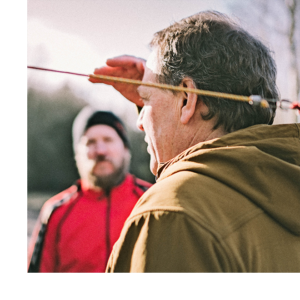 Our plans for 2018 are beginning to form. What would you like to see NWTA do more of in 2018? Is there something you’d prefer we do less of? We’re working for you — member, sponsor, and land manager alike — so please let us know how we can better reflect your desires. Email me directly at [email protected] … we’d love to hear your thoughts.
Our plans for 2018 are beginning to form. What would you like to see NWTA do more of in 2018? Is there something you’d prefer we do less of? We’re working for you — member, sponsor, and land manager alike — so please let us know how we can better reflect your desires. Email me directly at [email protected] … we’d love to hear your thoughts.
Here’s a few updates of projects we’re involved in on your behalf:
Sandy Ridge This coming week, we’re meeting with our cohorts at the BLM, sharing trail and infrastructure development plans and discussing NWTA’s ongoing role in the evolution of this nationally-known destination. Construction of the new trailhead brings opportunities for expanded shuttle events.
Stub Stewart A significant rework of the Williams Creek trail — increasing its all-weather suitability — begins this fall. Williams Creek, funded by an REI grant and to be built in conjunction with Trailkeepers of Oregon, will be the link to the envisioned south mountain bike area at Stub Stewart.
Gateway Green Gateway Green’s next phase — habitat restoration across the site — also begins this fall, funded through a $1M Metro Nature in Neighborhoods grant. We’re not talking trails at the moment, why? In perhaps a year, Portland will have created a showcase natural habitat completely intertwined with two-wheeled recreation— proof of the peaceful coexistence possible in higher profile city parks. Next summer, the riding experience at Gateway Green will rise to a new level.
ORCMP After relaxing the pace a bit through the summer months, development of Portland’s Off-Road Cycling Master Plan regains pace, with two Project Advisory Committee meetings remaining, focusing on Forest Park October 5th, and wrapping up November 9th. Public participation is encouraged; meetings are held at 4pm, 1900 SW 4th Avenue, Portland, 7th Floor, Conference Room 7A.
Waucoma You’ll hear more about Waucoma in the coming few years. Nestled up against the eastern edge of the Mark O. Hatfield Wilderness within the Columbia River Gorge, the Waucoma Planning Area holds potential for off-road cycling of a different flavor: bikepacking, gravel grinding, and fat biking in an area with sweeping vistas, including Mt. Hood, Mt. St. Helens, and Mt. Adams. We’re actively working as part of the Hood River Stewardship Collaborative (“Stew Crew”) to advance a recommendation to the U.S. Forest Service.
Oregon Trails Summit and MTB Community Summit Strategic planning for a nascent statewide trails coalition takes the next step October 27th at the Oregon Trails Summit. The following day, Central Oregon Trails Alliance and NWTA host the Oregon MTB Community Summit, where mountain bike advocacy groups statewide discuss key topics to advance mountain biking in Oregon.
Oregon Outdoors Coalition Come November, we begin participating in the Oregon Outdoors Coalition, a Collaborative, modeled after Washington State’s Big Tent Outdoor Recreation Coalition, focused on raising awareness of the importance of the outdoor recreation sector.
How big is our state’s outdoor recreation sector? While it may come as no surprise that 69 percent of Oregon residents participate in outdoor recreation, did you know that outdoor recreation sustains nearly three times the jobs in Oregon as the wood products industry?
In Oregon, outdoor recreation generates:
• $16.4 billion in consumer spending annually
• 172,000 direct jobs
• $5.1 billion in wages and salaries
• $749 million in state and local tax revenue
We’re excited to help shape the future, from unifying the voice of mountain biking in Oregon, to a statewide trails coalition, through the statewide recreational industry alliance. Where’s this go next? Oregon’s newly-formed Office of Outdoor Recreation.
Oregon’s Office of Outdoor Recreation Created earlier this year, the Office of Outdoor Recreation will, collaborating closely with Oregon Business Development and Travel Oregon, seek economic growth of the statewide recreation industry and pursue funding for recreation projects — including trail systems and bike parks — and streamline them through the complex public lands bureaucracy. The state recognizes that investing in outdoor infrastructure attracts employers and active workforces, ensuring those communities thrive economically and socially.
The NWTA is evolving, growing into an element of something much greater. And there’s work to spare. Care to join in? Email me at [email protected].